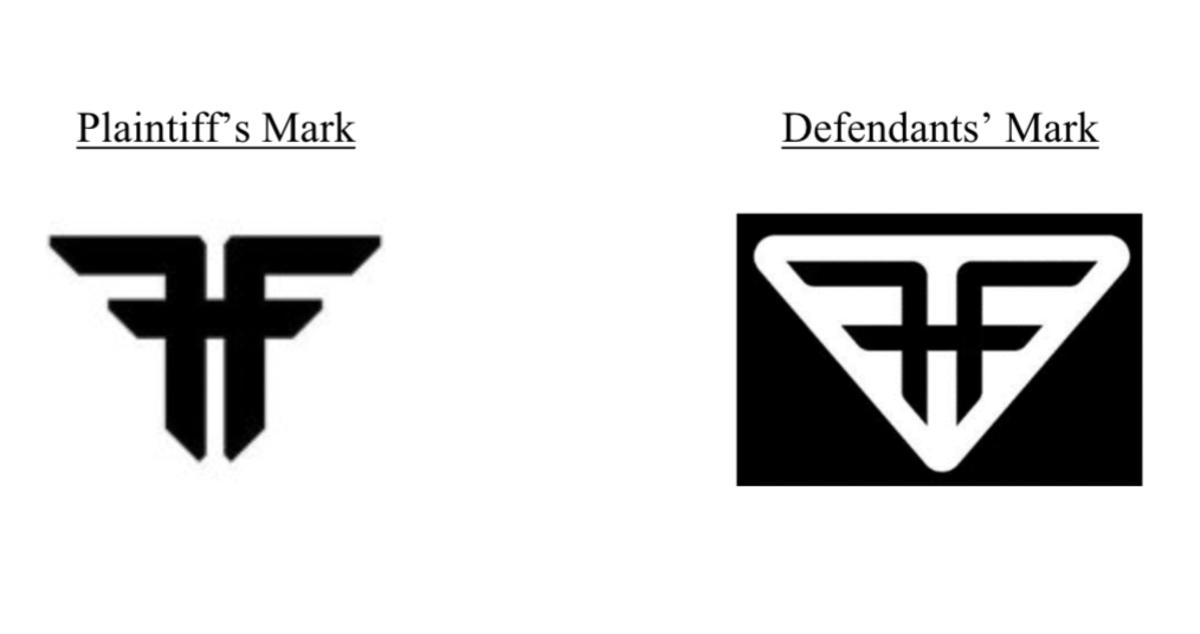LIV Golf May Face Uphill Battle in Trademark Infringement Complaint Against Phil Mickelson's Team
LOS ANGELES — LIV Golf Incorporated and HyFlyers GC, which is one of its 12 teams and is captained by Phil Mickelson, are the defendants in a trademark infringement complaint filed in U.S. District Court in New Jersey on June 8.
The alleged infringement was apparently first brought to the attention of LIV Golf in a March 24 letter from Cool Brands Supply S.A. through their lawyers.
The letter noted the use of the virtually identical design marks between that of a Cool Brands footwear and apparel line named Fallen and the design mark of HyFlyers, a new mark for the 2023 LIV season.

The original demand letter asked LIV Golf to Cease and Desist around using the mark, to provide a detailed accounting of all remaining inventory with the mark in question, identify any customers that purchased any apparel with the mark in question and provide a detailed summary of all sales of apparel bearing the mark in question including calculated gross and net profits of all sales. The letter also demanded that LIV Golf destroy all remaining product and acknowledge Cool Brands’s rights to the mark in question.
LIV Golf’s attorney responded on April 12 that the marks were not sufficiently similar to cause confusion among consumers.
According to trademark expert Christopher T. Griffith, partner at Green, Griffith and Associates LLP, trademark law exists to ensure that owners of trademarks benefit from the goodwill associated with their marks, allowing the owners to prevent others from duping a consumer into buying a product the consumer mistakenly believes originated from the trademark owner but in fact does not.
Prior to adopting a mark, a company commonly conducts a freedom-to-operate search to identify any potentially conflicting trademark rights.
If a search was conducted by LIV Golf on the HyFlyers mark, it was not mentioned in the complaint. So, it's currently not known and may never be known due to attorney-client privilege.
To prevail in a trademark case, Cool Brands must prove that it owns the mark (the registration certificate is sufficient), that the mark is valid and protectable and that the mark used by LIV Golf is likely to cause confusion as to the source of the goods on which the mark is used.
In most cases, liability for the counts in the Cool Brands complaint centers around the question of whether there exists a “likelihood of confusion” – are consumers likely to be deceived or confused by the similarity of the Cool Brands and LIV Golf marks?
“There is not one road to proving ‘likelihood of confusion,’” Griffith said, noting that many factors must be considered.
Those include the similarity of the marks, similarity of the goods being sold with the mark (hats, shirts, etc.), similarity of trade channels for the goods (how the goods are sold, such as in retail stores and online), similarity of consumers for the goods, the degree of recognition of the registered mark, evidence of any actual confusion in the marketplace, and the existence of any good faith by LIV Golf.
“Did LIV Golf intend to create a likelihood of confusion with its mark?” Griffith said. “Most of these factors appear, at this point in time, to favor Cool Brands.”
Griffith went on to say that LIV Golf can utilize certain defenses such as fair use, laches (Cool Brands unfairly delayed in asserting its rights in the mark); unclean hands (Cool Brands engaged in misconduct relating to the infringement claim); that Cool Brands misrepresented the mark or its associated goods; that Cool Brands can't continue with this lawsuit due to a prior act or if Cool Brands had abandoned its mark. None of these defenses appear to be supportable based on what is currently known.
Remedies (if Cool Brands prevails) can include the profits made by LIV Golf from the sales of goods bearing the infringing mark, other damages, including treble (triple) damages if LIV Golf acted in bad faith, the recovery of Cool Brands’s attorneys’ fees in an exceptional case, an injunction to prevent LIV Golf’s use of the infringing mark and a court order mandating the destruction of any goods bearing the infringing mark.
Griffith concluded that the principle of Occam’s Razor may provide an answer as to why LIV Golf adopted what is a confusingly similar mark to that of Cool Brands – because it wanted to do so and can afford any fight in the courtroom and can survive any remedy. With almost $700 billion available in its PIF fund and the new prospect of partnering with the PGA Tour, LIV Golf has the ability to pay off any remedy and withstand any court order enjoining it from using the mark.
In the meantime, do the vast majority of golf fans even recognize the LIV Golf mark (or the HyFlyers GC) that are at issue? Will this mark have any value post-merger when the golf landscape is re-shaped?
In short, LIV Golf has no worries. With so much capital, LIV Golf could likely settle the case by buying access to the Cool Brands mark if it desired to do so.
According to court documents, LIV Golf has not been served with the complaint as of yet and an attorney has not been registered for the case on the LIV Golf side.
